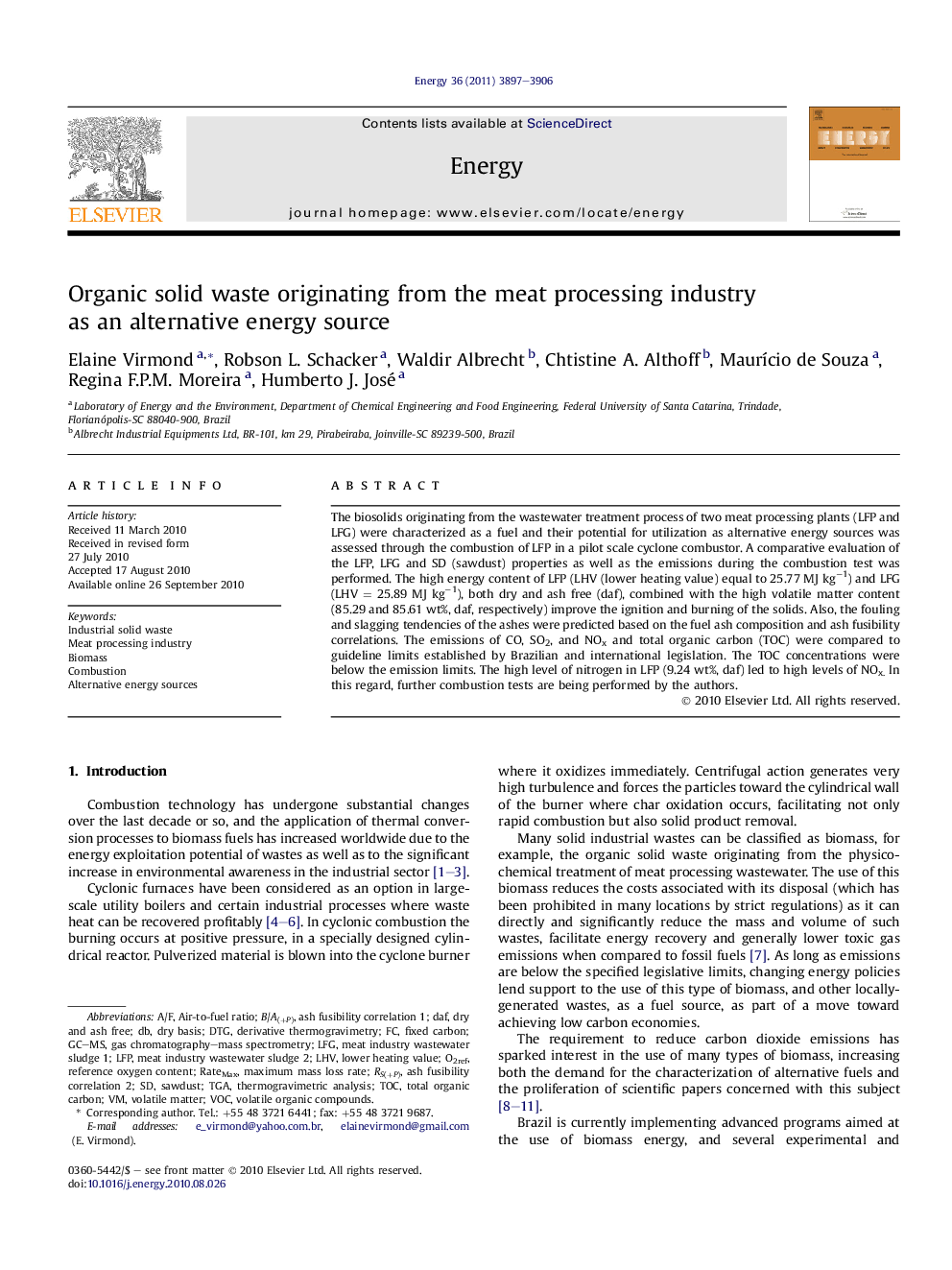| Article ID | Journal | Published Year | Pages | File Type |
|---|---|---|---|---|
| 1734724 | Energy | 2011 | 10 Pages |
The biosolids originating from the wastewater treatment process of two meat processing plants (LFP and LFG) were characterized as a fuel and their potential for utilization as alternative energy sources was assessed through the combustion of LFP in a pilot scale cyclone combustor. A comparative evaluation of the LFP, LFG and SD (sawdust) properties as well as the emissions during the combustion test was performed. The high energy content of LFP (LHV (lower heating value) equal to 25.77 MJ kg−1) and LFG (LHV = 25.89 MJ kg−1), both dry and ash free (daf), combined with the high volatile matter content (85.29 and 85.61 wt%, daf, respectively) improve the ignition and burning of the solids. Also, the fouling and slagging tendencies of the ashes were predicted based on the fuel ash composition and ash fusibility correlations. The emissions of CO, SO2, and NOx and total organic carbon (TOC) were compared to guideline limits established by Brazilian and international legislation. The TOC concentrations were below the emission limits. The high level of nitrogen in LFP (9.24 wt%, daf) led to high levels of NOx. In this regard, further combustion tests are being performed by the authors.
